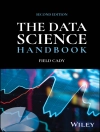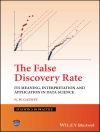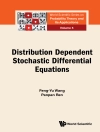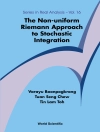This book has as main aim to be an introductory textbook of applied knowledge in Numerical Weather Prediction (NWP), which is a method of weather forecasting that employs: A set of equations that describe the flow of fluids translated into computer code, combined with parameterizations of other processes, applied on a specific domain and integrated in the basis of initial and domain boundary conditions. Current weather observations serve as input to the numerical computer models through a process called data assimilation to produce atmospheric properties in the future (e.g. temperature, precipitation, and a lot of other meteorological parameters). Various case studies will be also presented and analyzed through this book.
Inhoudsopgave
Preface vii
Introduction ix
Chapter 1. The Primitive Equations 1
1.1. Wind forecast equations (conservation of momentum) 1
1.1.1. Real forces 6
1.1.2. Apparent forces 14
1.1.3. Equation of motion 17
1.2. Continuity equation (conservation of mass) 19
1.3. Temperature forecast equation (conservation of energy) 21
1.4. Moisture forecast equation (conservation of water vapor) 26
1.5. Synopsis of equations 26
Chapter 2. Solving Methods in NWP Models 31
2.1. Decomposition of variables – the perturbation method 31
2.1.1. Synoptic scale equations 39
2.1.2. Mesoscale equations 40
2.2. Numerical solutions of partial differential equations 43
2.2.1. Computations by finite difference schemes 44
2.2.2. Derivation of finite difference representations 46
2.2.3. Methods for solving the advection-diffusion equation 50
2.3. Time splitting 63
Chapter 3. Domain Structures and Boundary Conditions 67
3.1. Horizontal grid structure and resolution 68
3.2. The vertical coordinate system 71
3.2.1. Terrain-following coordinate system 72
3.3. Boundary conditions 86
3.3.1. Lateral boundary conditions 88
3.3.2. Upper (top) boundary conditions 90
3.3.3. Lower (bottom) boundary conditions 90
3.4. Design of a simulation 99
Chapter 4. Introduction to Data Assimilation 101
4.1. Successive correction methods 102
4.2. Least square method 103
4.3. Variational approach 108
4.4. Generalization of the methods 114
Chapter 5. Desert Dust Modeling 119
5.1. Dust uptake mechanisms formulation 121
5.2. Dust advection and deposition 127
5.3. Parameterization of the dust feedbacks on climate 132
Chapter 6. Simulations of Extreme Weather and Dust Events 143
6.1. Case study 1: numerical simulation of a Mediterranean cyclone and its sensitivity on lower boundary conditions 143
6.1.1. Description of the synoptic conditions 143
6.1.2. Design of the simulations 145
6.1.3. Analysis of the numerical simulations 147
6.2. Case study 2: nowcasting an extreme precipitation event 151
6.2.1. Synoptic analysis of the event 151
6.2.2. Nowcasting methodology and results 153
6.3. Case study 3: seasonal predictability of a large-scale heat wave 157
6.3.1. Description of the synoptic conditions 158
6.3.2. Model description and methodology 159
6.3.3. Predictability assessment 161
6.4. Numerical study of a severe desert dust storm over Crete 163
Appendices 169
Appendix 1 171
Appendix 2 179
References 197
Index 207
Over de auteur
Petros Katsafados, Associate Professor, Department of Geography, Harokopio University, Athens, Greece.
Elias Mavromatidis, Research Associate, Department of Geography, Harokopio University, Athens, Greece.
Christos Spyrou, Researcher, National and Kapodistrian University of Athens, Athens, Greece.












